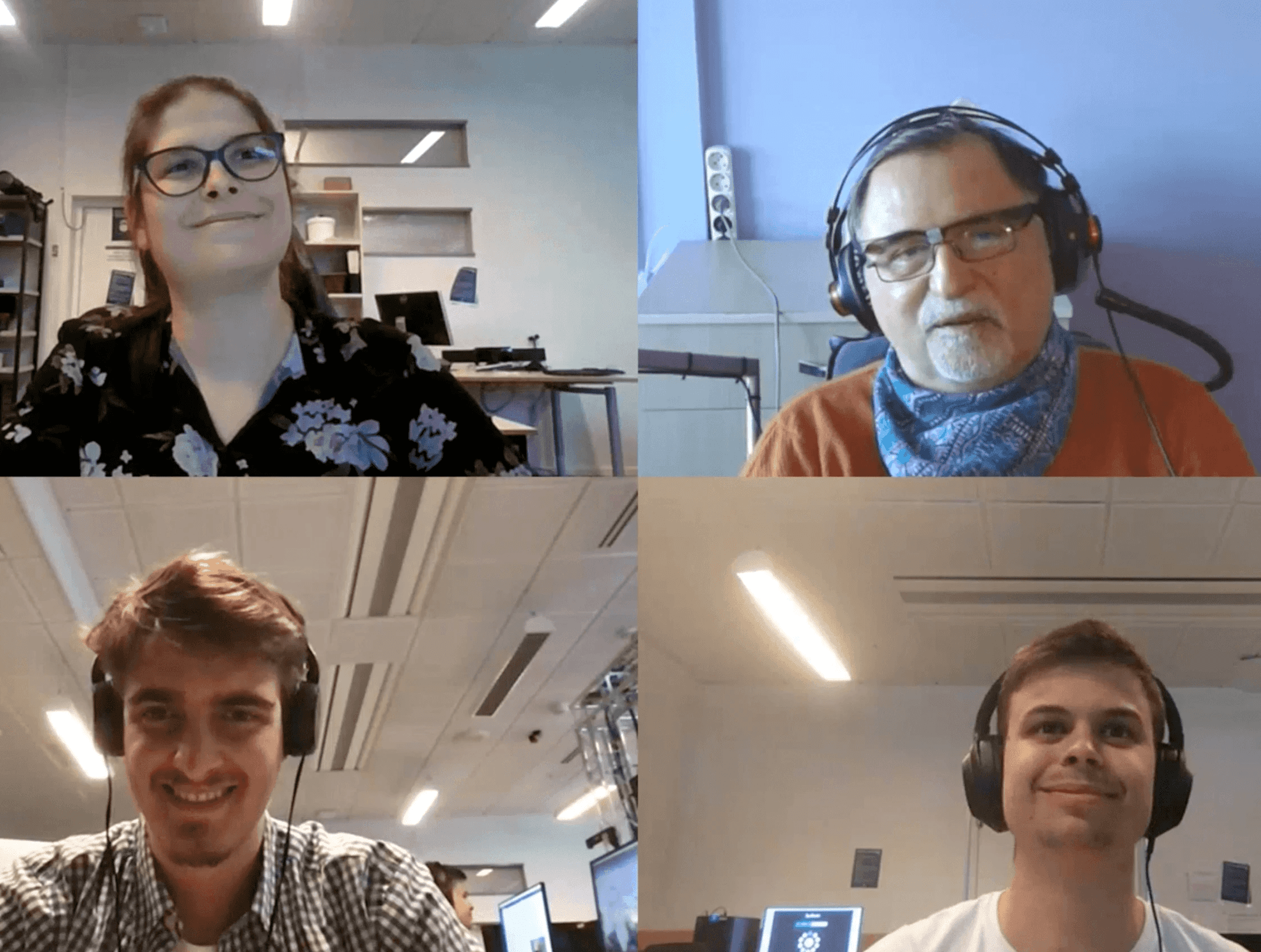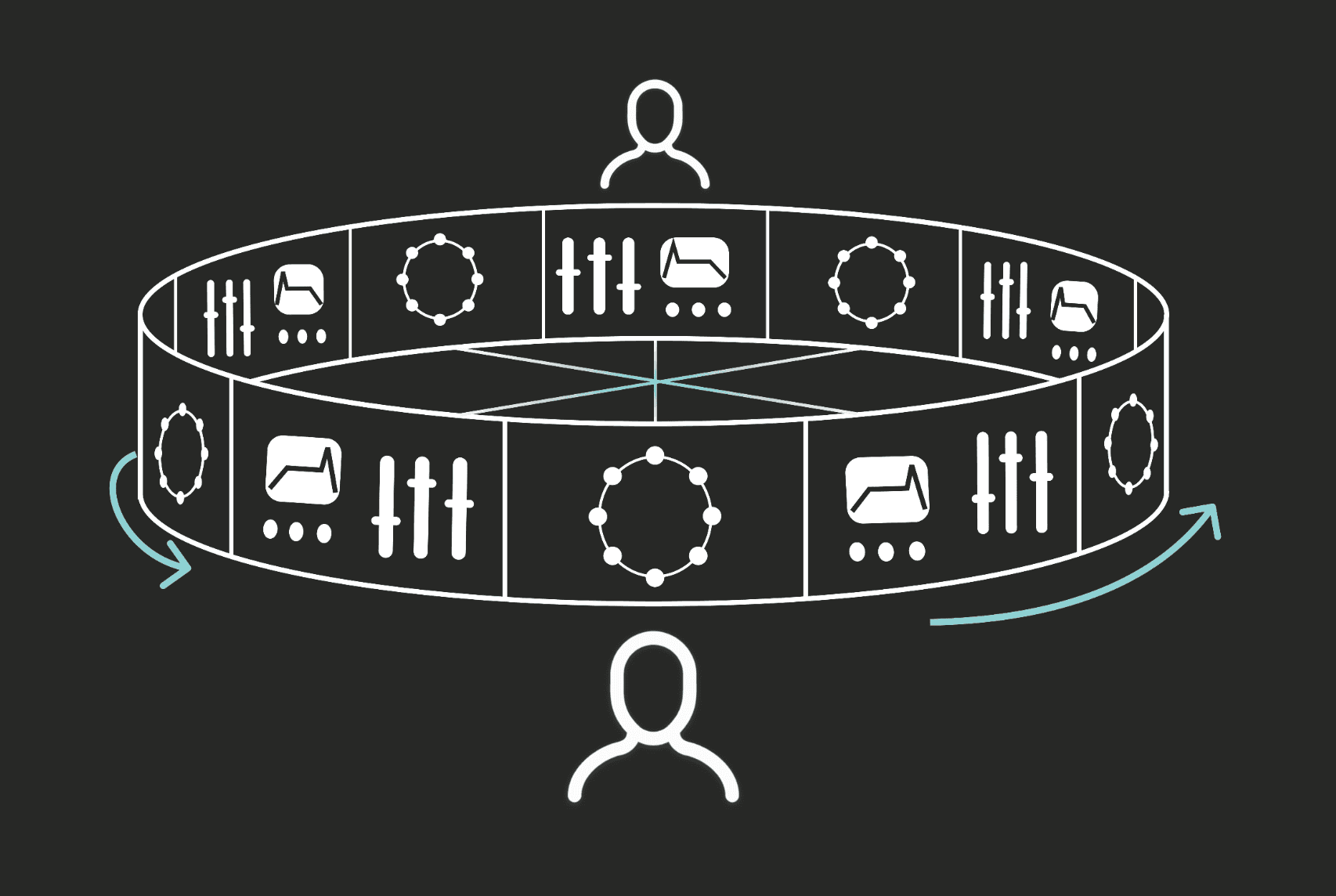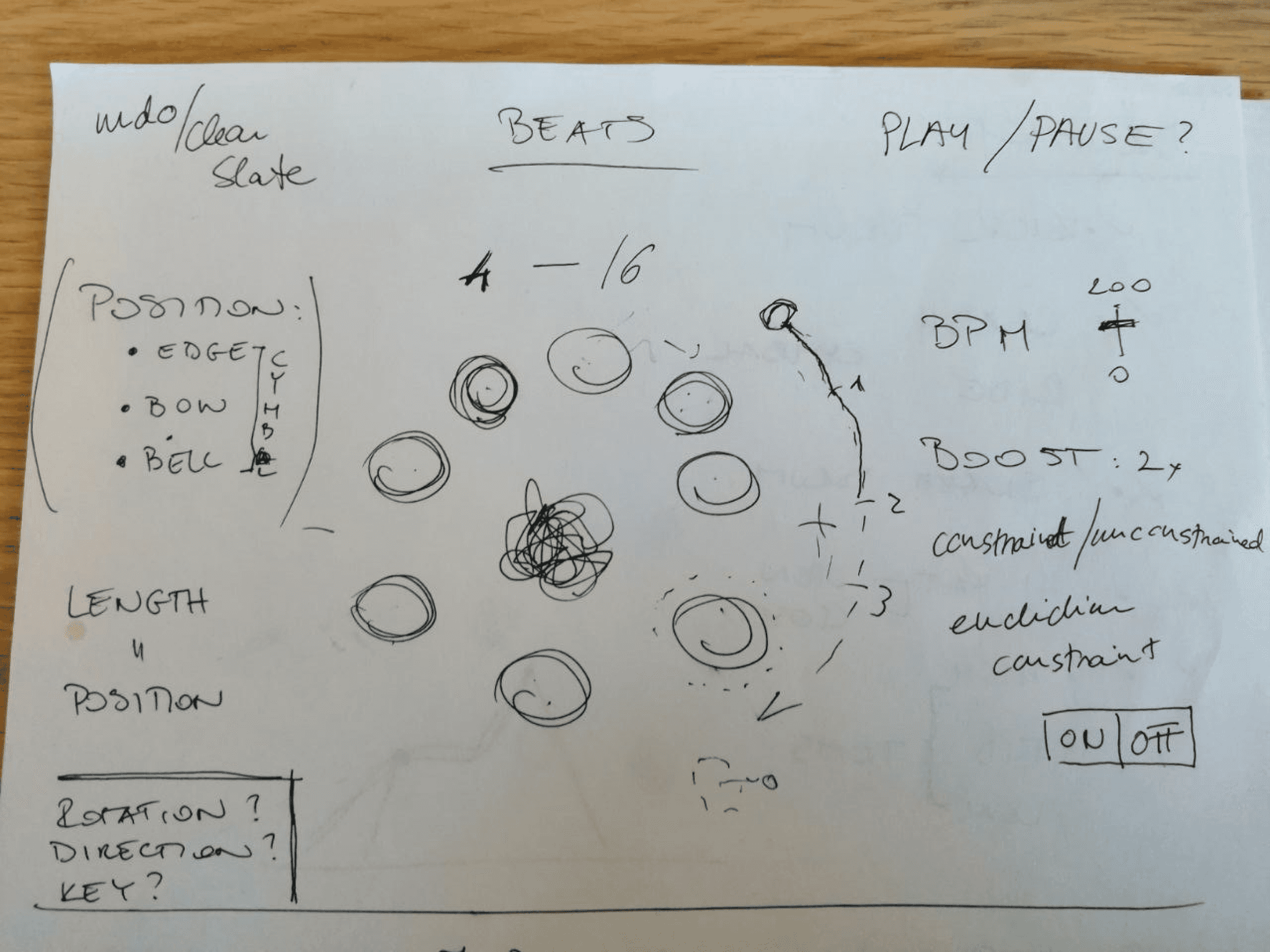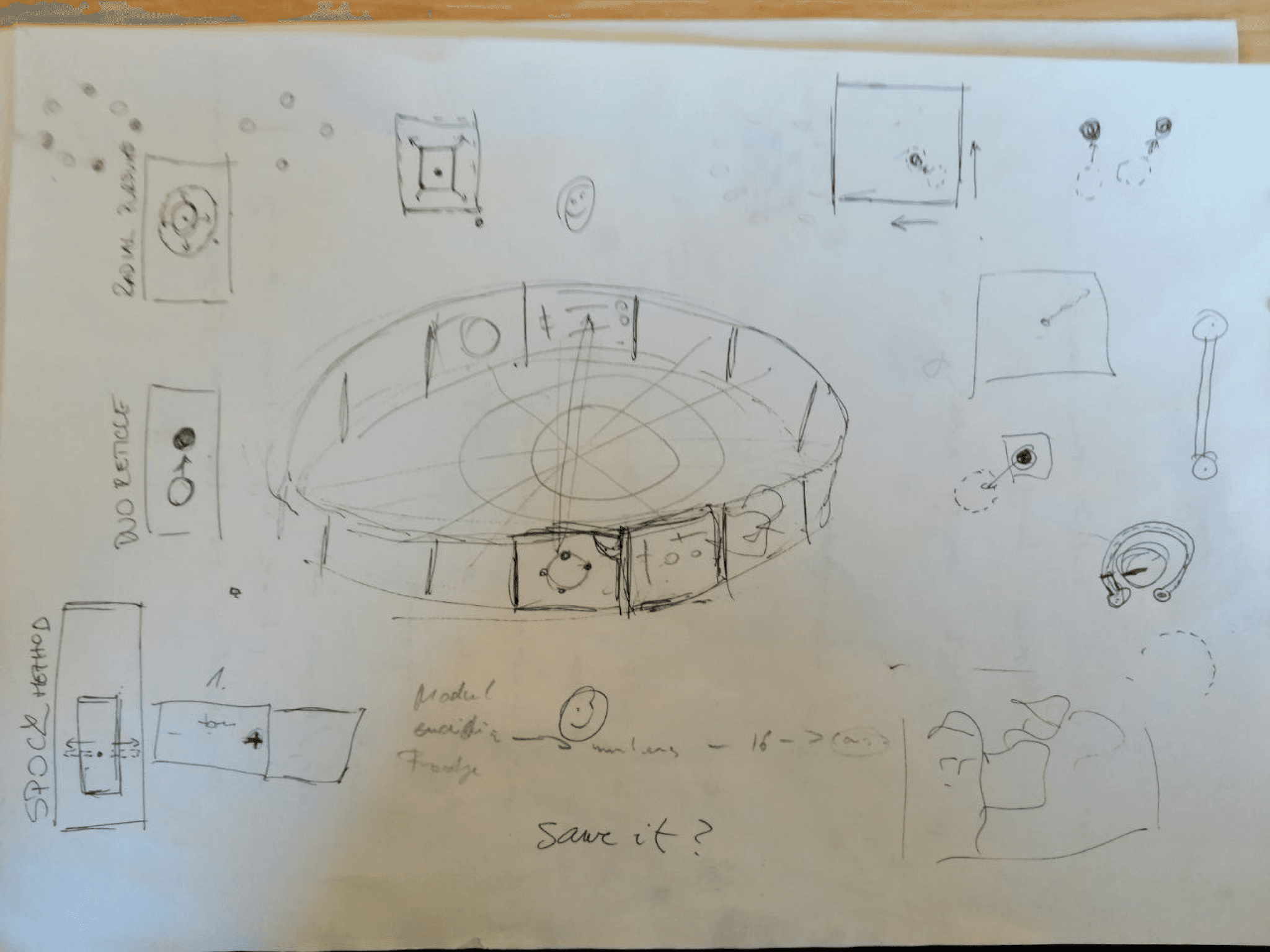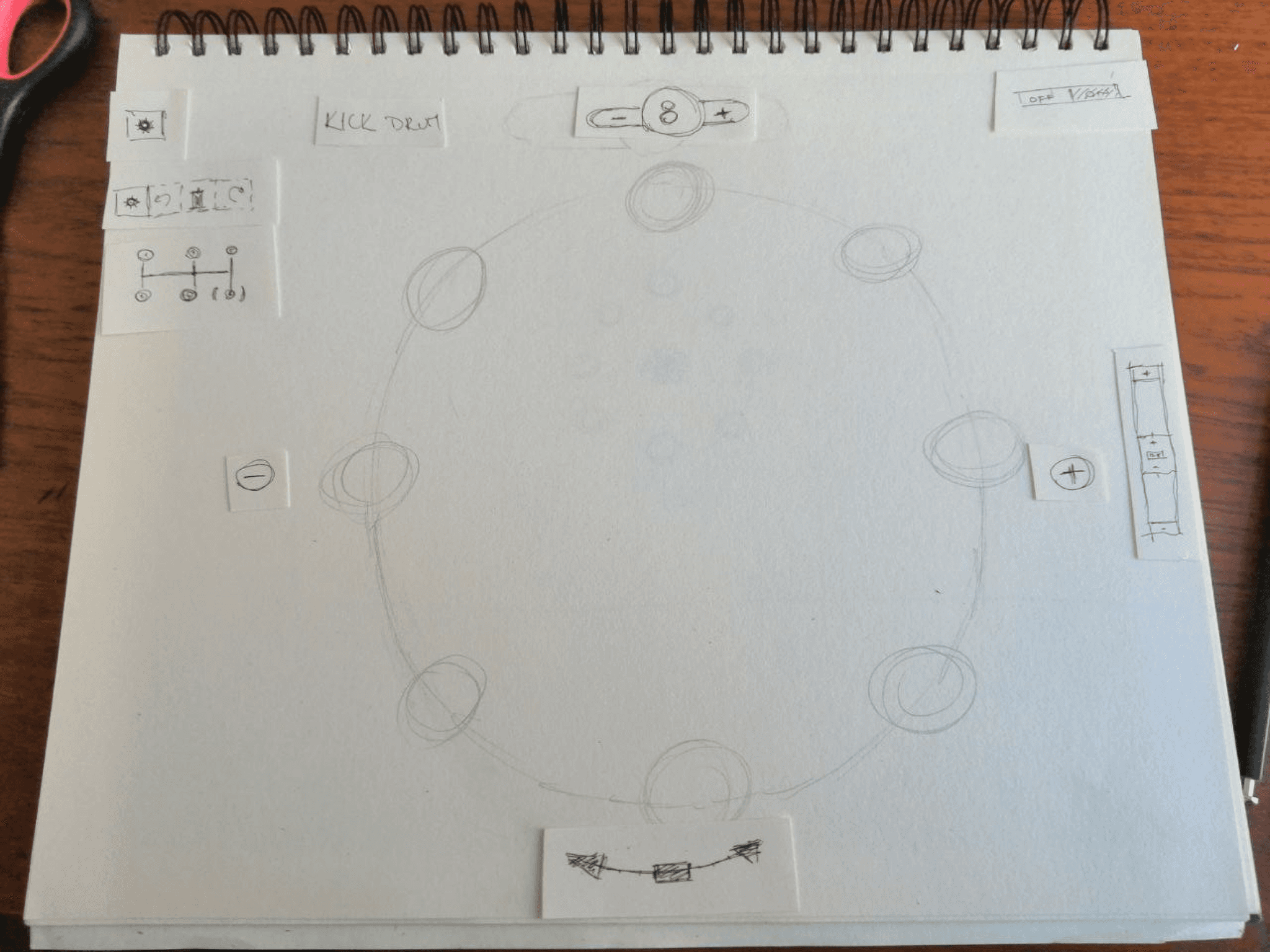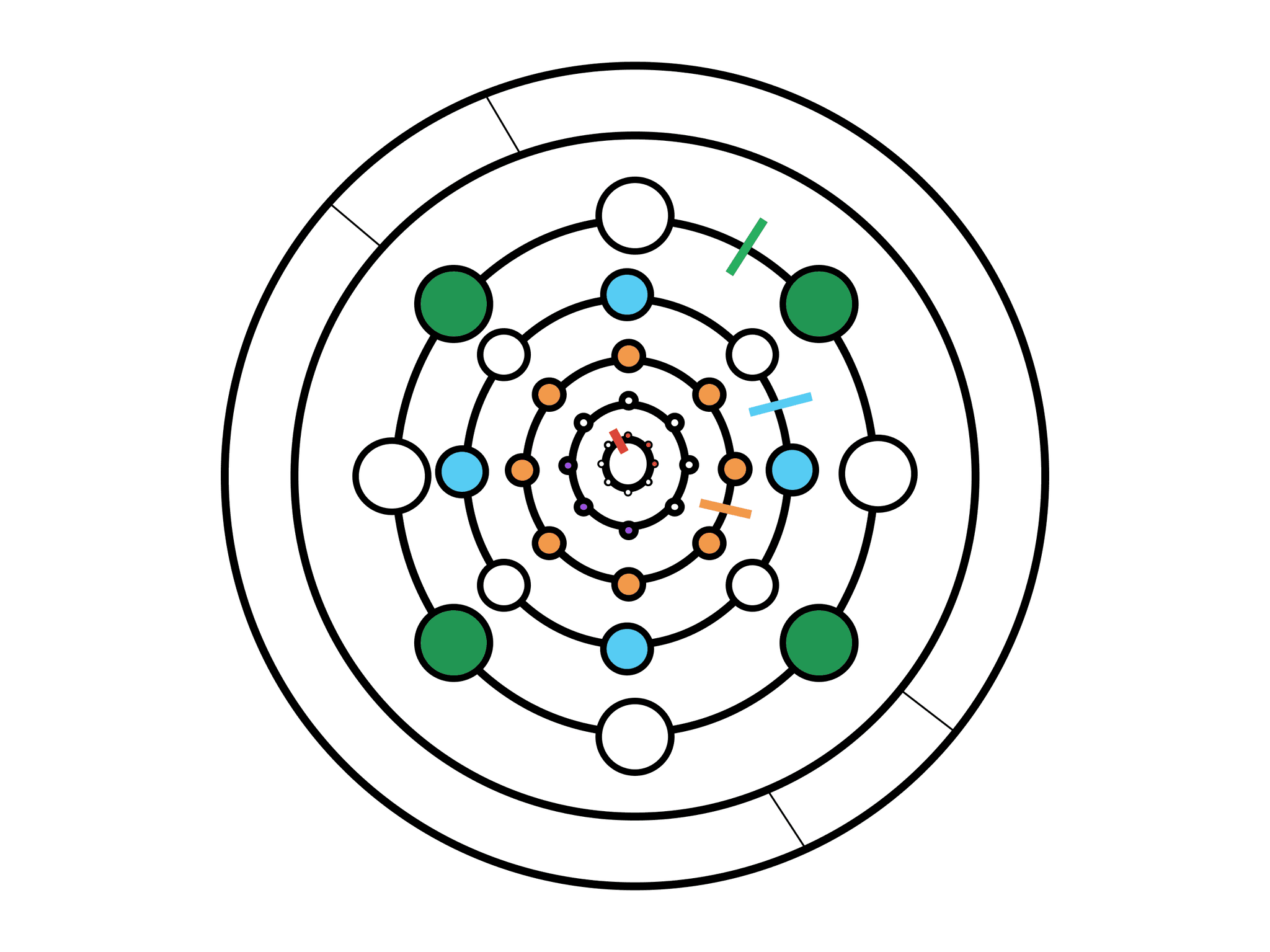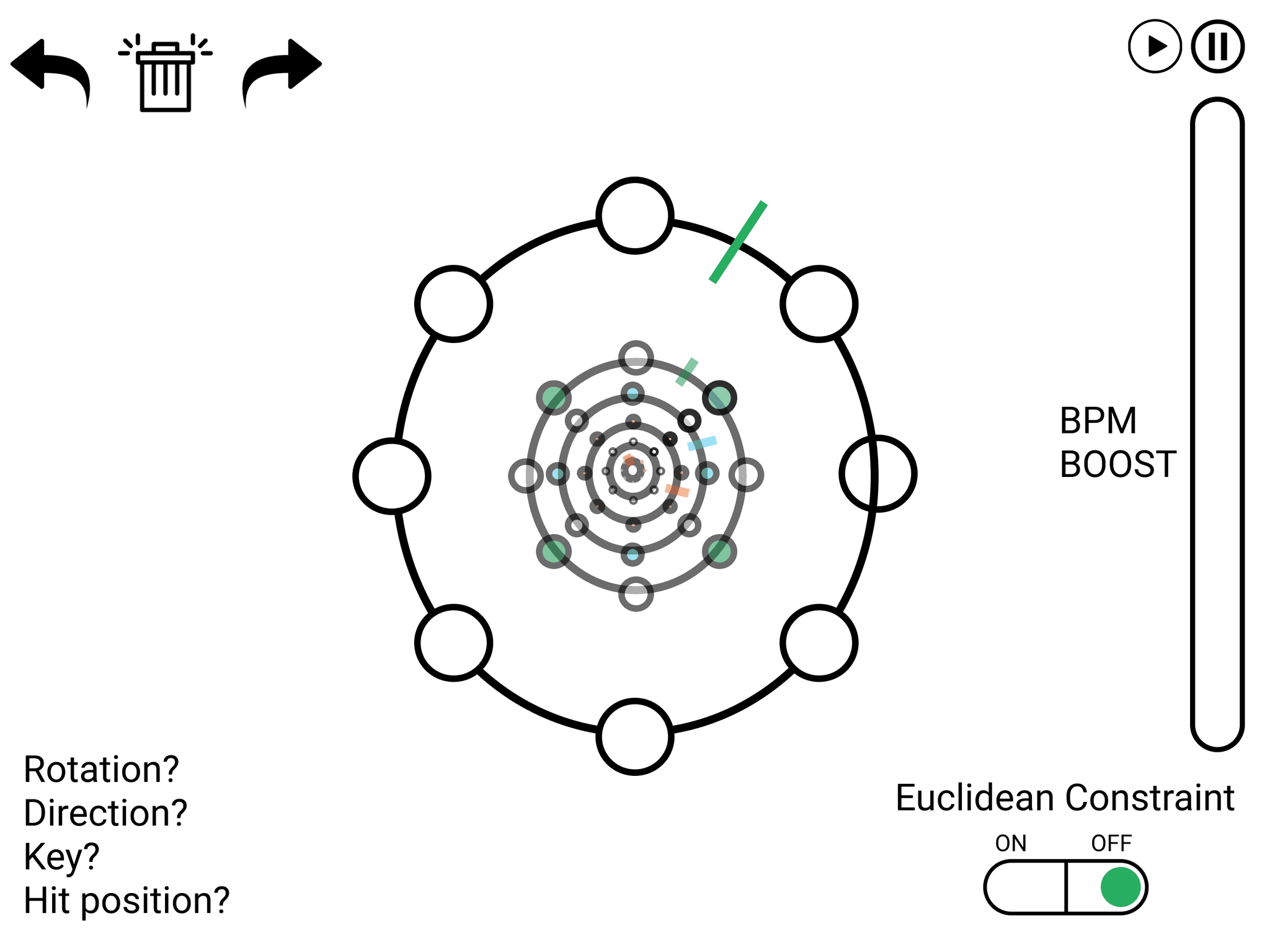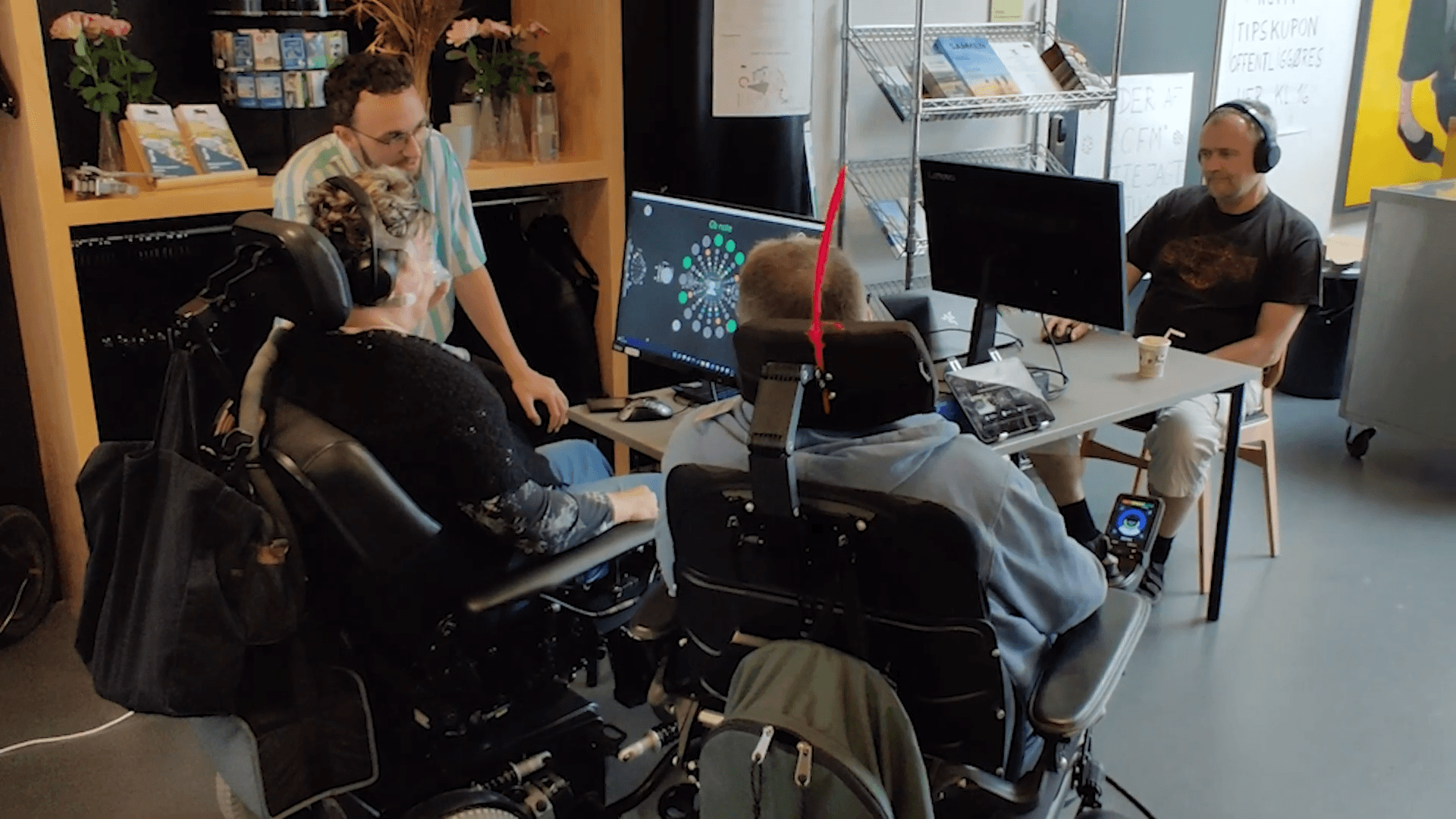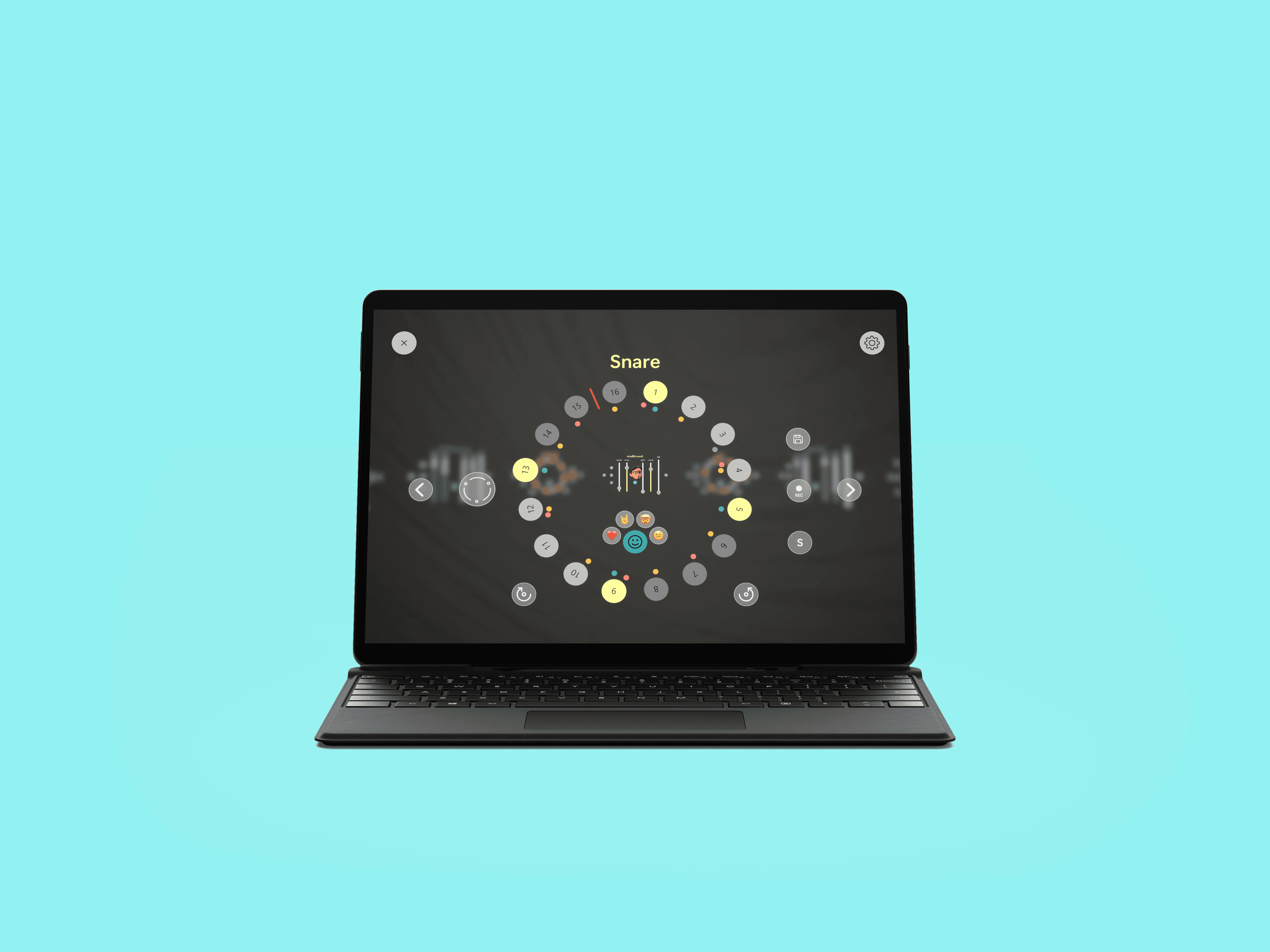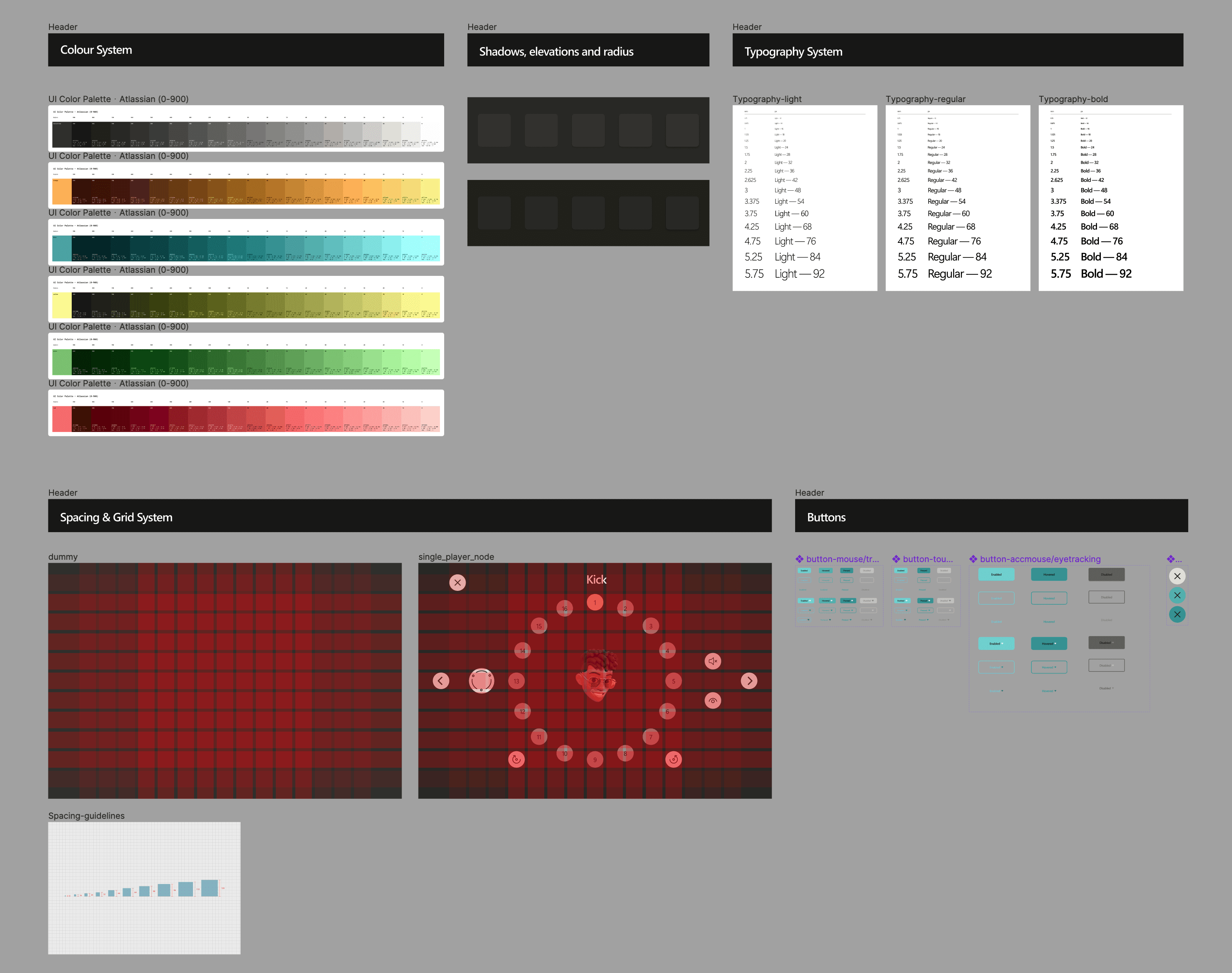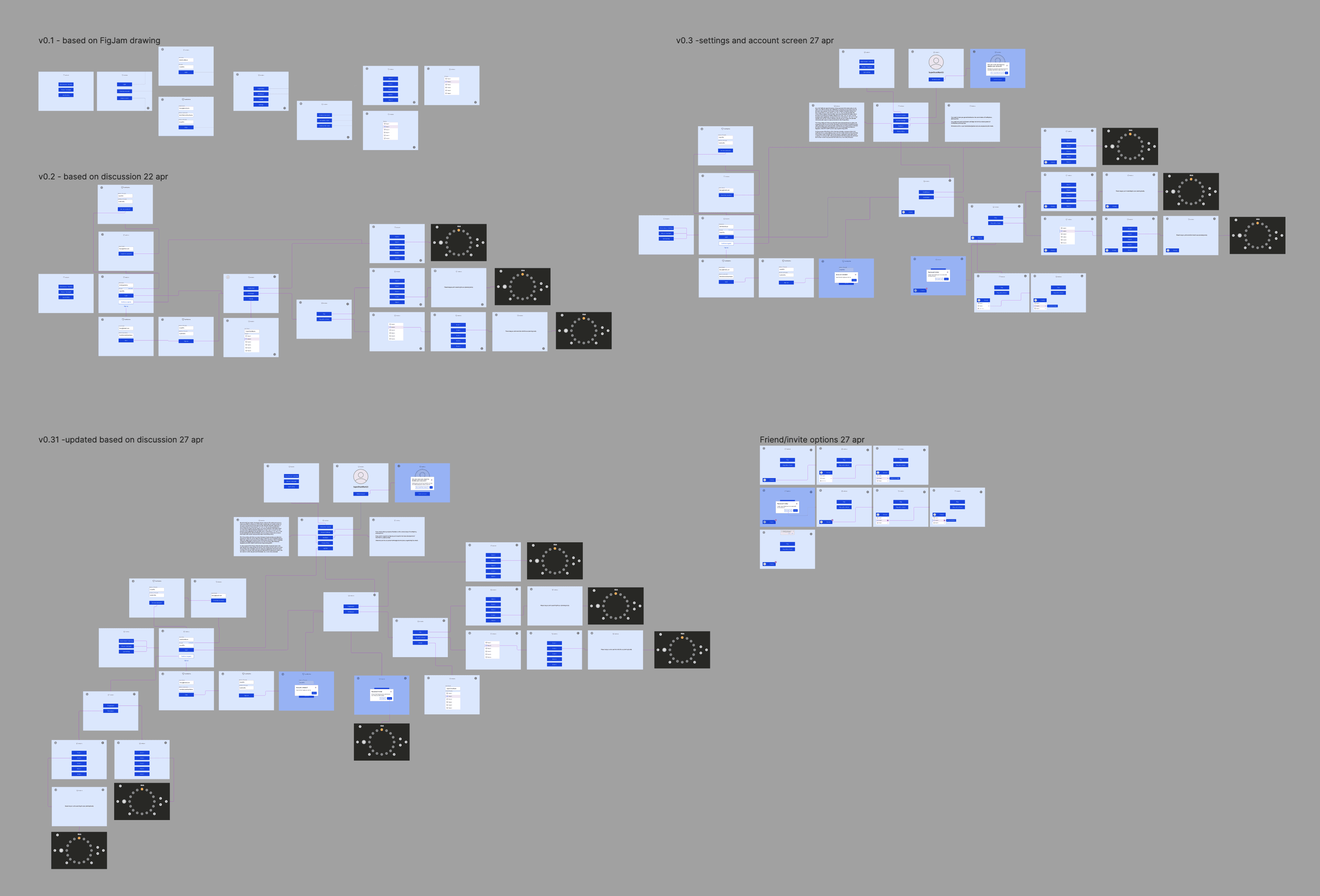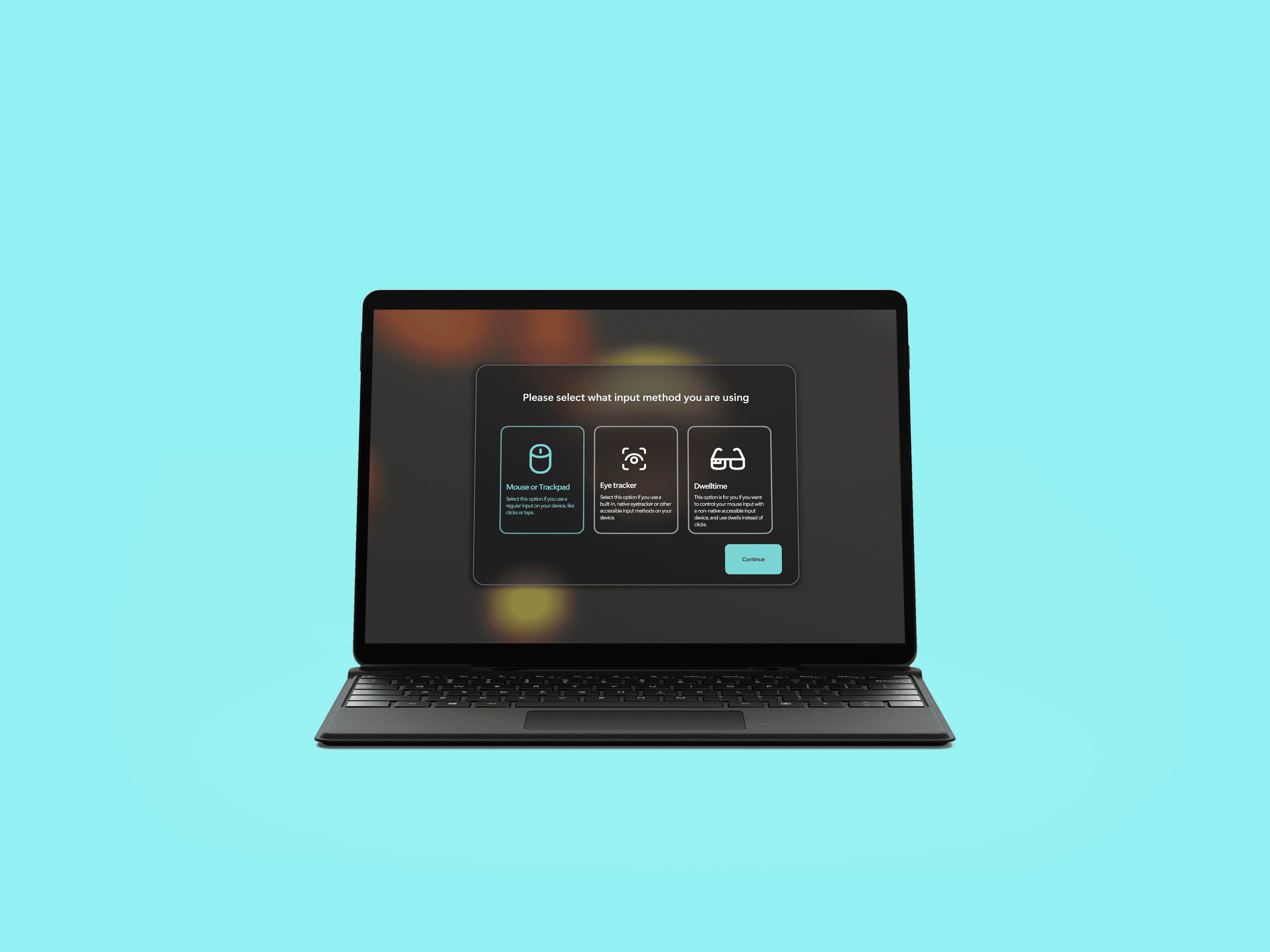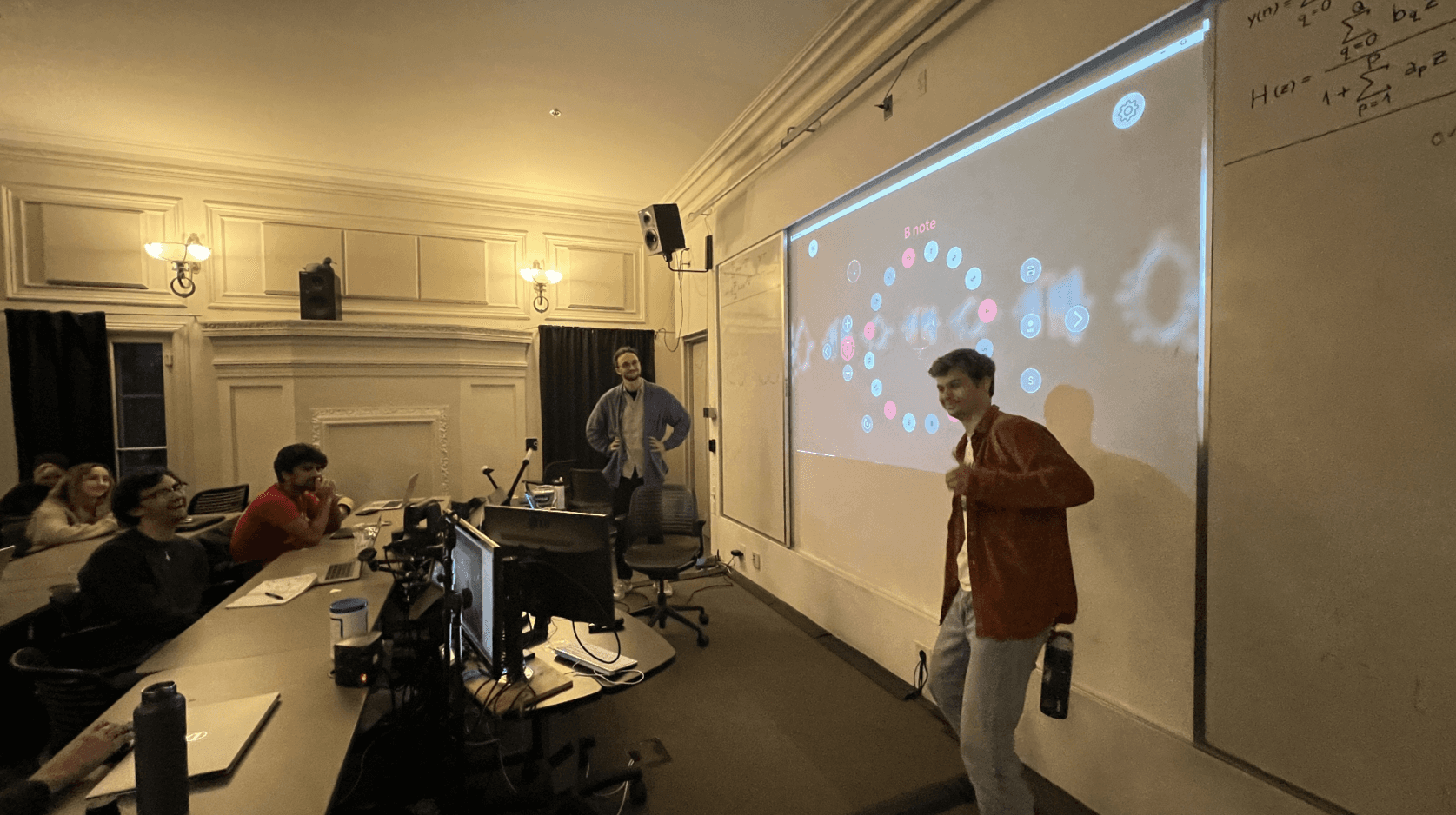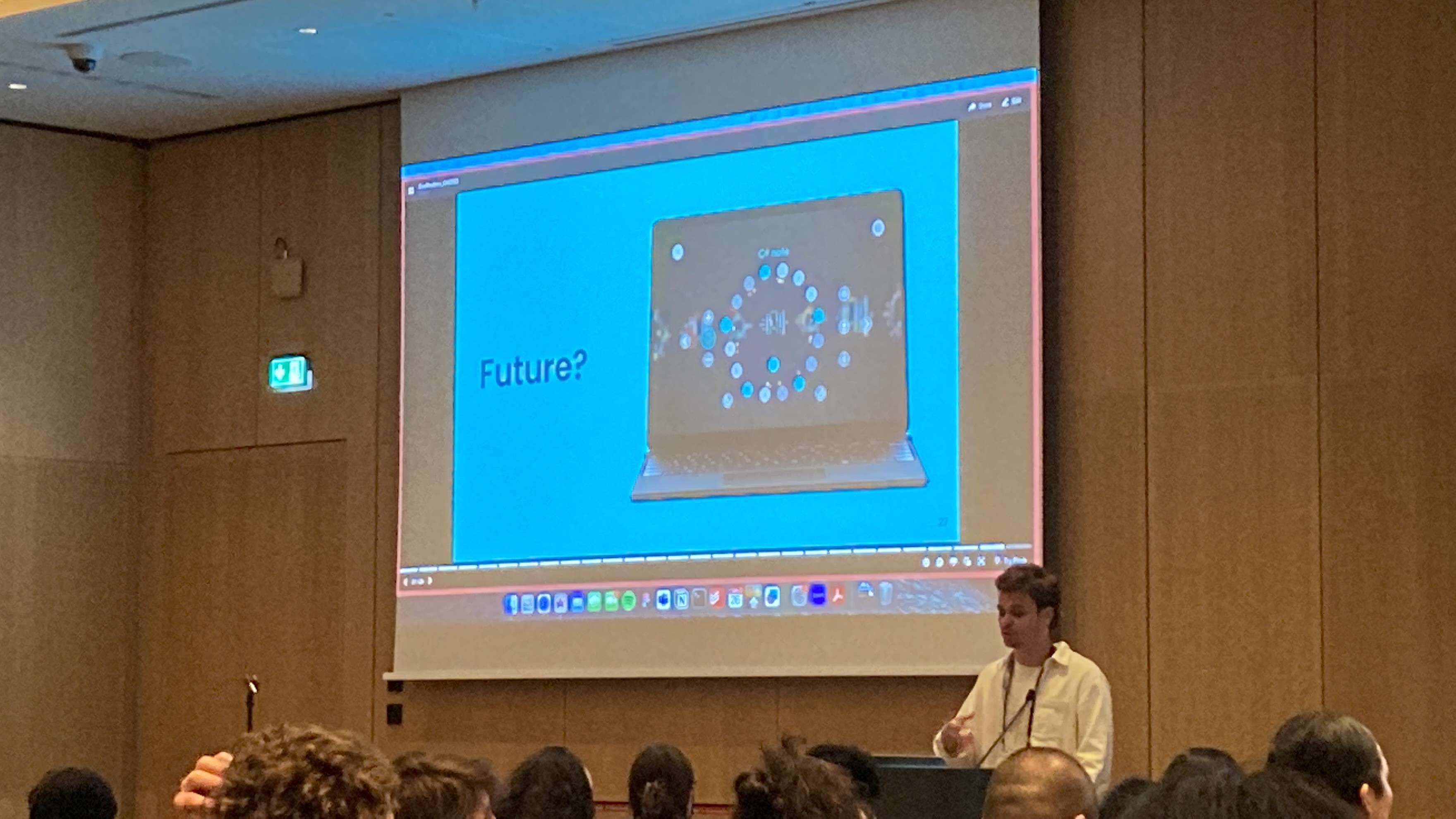We created DuoRhythmo, a collaborative musical experience for people living with ALS. Focusing on eye-tracking as an input, we designed the interface to be inclusive from the get-go and continously iterated on the product together with members of the ALS community, their caretakers and other relevant stakeholders. After the final testing people with ALS rated DuoRyhthmo 79.5/100 for its usability, and described it as "fun, empowering, accessible, easy to use, engaging, and stimulating." The product is available in the Microsoft Store. My role was leading the interaction design process in our team.
User research
Interaction design
Visual design
01. Challenge
Building a real-time multiplayer experience for people living with ALS as a fun leisure activity where they can connect with each other thorugh music.
The whole experience had to be designed to be used with eye-trackers and other accessible input devices. As ALS progresses, people gradually lose their skills and they face challenges. Often they don't have tools for self-expression. Designing inclusive creative tools can greatly increase their quality of life, especially if it includes a social aspect. Our goal was to enable people with ALS to connect through the power of music online to fight loneliness and depression.
This project started as my Bachelor Thesis in collaboration with Microsoft Research, then I kept coming back to it first during my Master's, then as a side project.
There are many people living with ALS (PALS) or some form of motor impairment who used to be professional musicians and they can't share the joy of musical co-creation anymore.
Through interviews with the ALS community we learnt that as their condition progresses, they engage less in social activitIes.
So we wanted to create a collaborative, accessible experience, as a universal connection for PALS, not necessarily having
any prior musical expertise.
Modular input system
Through a lot of interviews with the ALS community we found out that we need to design a modular input system which correlates with the progression of ALS.
03. Ideation
The first thing was to conceptualize the main collaboration metaphor. For this we took inspiration from the Dato Duo synth. We came up with a spatial carousel between the two collaborating players. One player places beats on a sequencer, while the other player modulates the beats with different effects at the same time. After a certain time, the carousel rotates and the roles are swapped.
Initial sketches
From the beginning, we decided to design a radial UI, with a resting position in the middle. This way, we could minimize time and effort to select UI elements with an eye-tracker, in accordance with Fitt's Law.
First we came up with a grid-system tailored for eye-tracking. This is built on squares 128x128 pixels, as the minimum target size for eye-trackers is 100x100. Eye-trackers tend to work less accurately towards the edges of the screen, so we kept the middle for the most important interactions and the sides for system control.
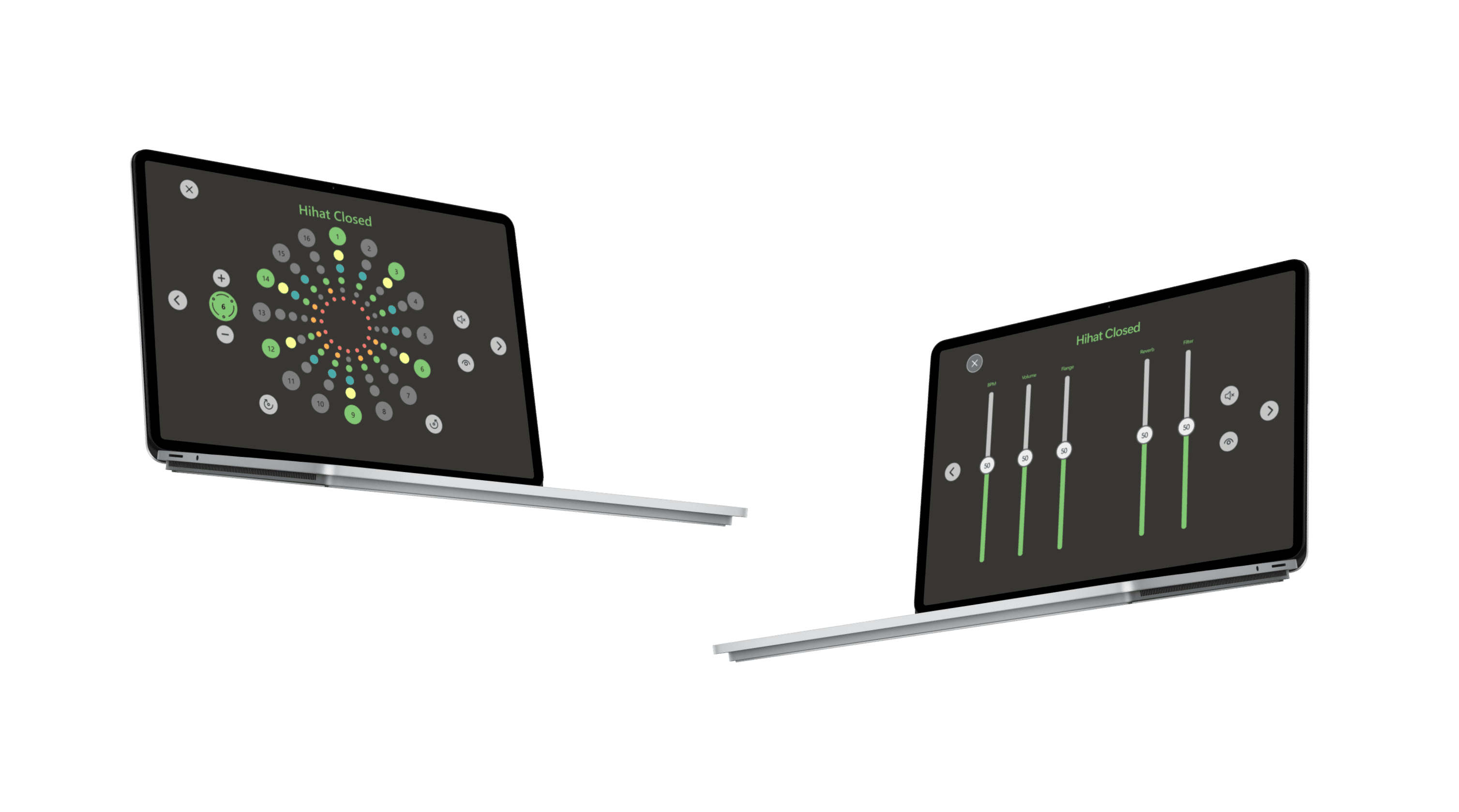
Accessible colour palette
The colours of the interfaces were carefully chosen not to fatigue our users' eyes. Colours more than 500 nm with low radiance are the most easy to look at for long times, so we constructed a colour palette of pastel colours of: red, green, yellow, orange and light blue.
05. Testing & Results
We evaluated various features of DuoRhythmo in multiple steps, and it has been improved iteratively based on the results.
Testing the usability, user experience, and collaboration effectivenss we used both qualitative and quantitative methods. Based on the analyzed data we introduced new features.
USABILITY & A/B TESTING
63.8 / 100
on the System Usability Scale while testing the usability of DuoRhythmo with able-bodied participants. We also did an A/B testing of two different slider designs and two different input methods.
SUMMATIVE EVALUATION
were the most common words picked from the MDT reaction cards by PALS. We did a follow-up interview with each participant.
With some adjustments, we improved the usability benchmark to 79.5.
COLLABORATION EFFECTIVENESS
High social presence
was recorded via the Social Presence in Gaming Questionnaire. Users reported high-level empathy towards the other player, no negative feelings and active behavioural involvement during jam-sessions.
06. Improvements
We focused on three areas:
Highlighting the presence of the other player
Creating a small, modular design system
Turning the prototype into an MVP and releasing it on the Microsoft Store.
07. Impact
DuoRhythmo still rocks, and PALS can just jam together whenever they want. Since the soft-release, we have some constant happy users. We also published articles, got featured on blogs and I was speaking on multiple conferences sharing our journey.

